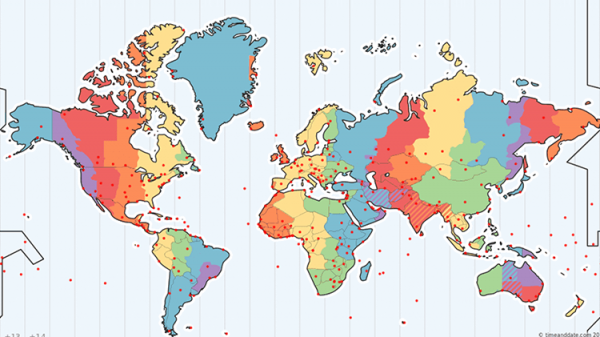Seattle, Washington Time Zone: Exploring Pacific Standard Time (PST)
Time zones play a crucial role in our globalized world, ensuring that communities across different regions are synchronized. Seattle, a vibrant city in the state of Washington, has its own designated time zone. In this article, we will delve into the specifics of Seattle's time zone, shedding light on its geographical context and exploring the intricacies of Pacific Standard Time (PST).
1. Understanding Time Zones:
Time zones are divisions of the Earth's surface that have the same standard time. They are established to facilitate consistent timekeeping and accommodate the rotation of the Earth. Time zones help coordinate activities, transportation, and global communications across different regions.

Time Zones
2. Geographical Context of Seattle, Washington:
Seattle, located in the northwestern part of the United States, lies within the Pacific Northwest region. It is surrounded by the waters of Puget Sound and Lake Washington, with the Cascade Range and Olympic Mountains serving as picturesque backdrops. Seattle's latitude and longitude position it within the Pacific Time Zone.
3. Pacific Standard Time (PST):
Seattle, along with other cities in the Pacific Time Zone, observes Pacific Standard Time (PST) during the non-daylight saving period. PST is designated as the standard time for this region and is eight hours behind Coordinated Universal Time (UTC-8). When Seattle is in PST, it shares the same time as other cities within the Pacific Time Zone, including Los Angeles and Vancouver.

Pacific Standard Time (PST)
4. Daylight Saving Time in Seattle:
Like many regions in North America, Seattle observes daylight saving time (DST) to maximize daylight during the summer months. During DST, clocks are adjusted forward by one hour, resulting in Pacific Daylight Time (PDT). PDT is UTC-7, making Seattle and other cities in the Pacific Time Zone seven hours behind Coordinated Universal Time.
5. DST Start and End Dates:
The start and end dates for daylight saving time can vary from year to year. In Seattle, DST typically begins on the second Sunday in March, when clocks are moved forward by one hour. It ends on the first Sunday in November, when clocks are moved back by one hour, returning to standard time (PST).
6. Time Differences with Other Regions:
Understanding Seattle's time zone is essential for coordinating activities with other cities or planning international communications. It is worth noting that Seattle is three hours behind the Eastern Time Zone (EST) and four hours behind the Atlantic Time Zone (AST). When communicating with regions in different time zones, it is crucial to consider these time differences.
Seattle, Washington operates within the Pacific Time Zone and observes Pacific Standard Time (PST) during the non-daylight saving period. The city's location in the Pacific Northwest region places it in a geographically significant position within the United States. Understanding the intricacies of Seattle's time zone facilitates effective coordination with other cities, both within the Pacific Time Zone and across different time zones. By staying informed about time zone differences, we can ensure smooth interactions and efficient global connectivity in our increasingly interconnected world.